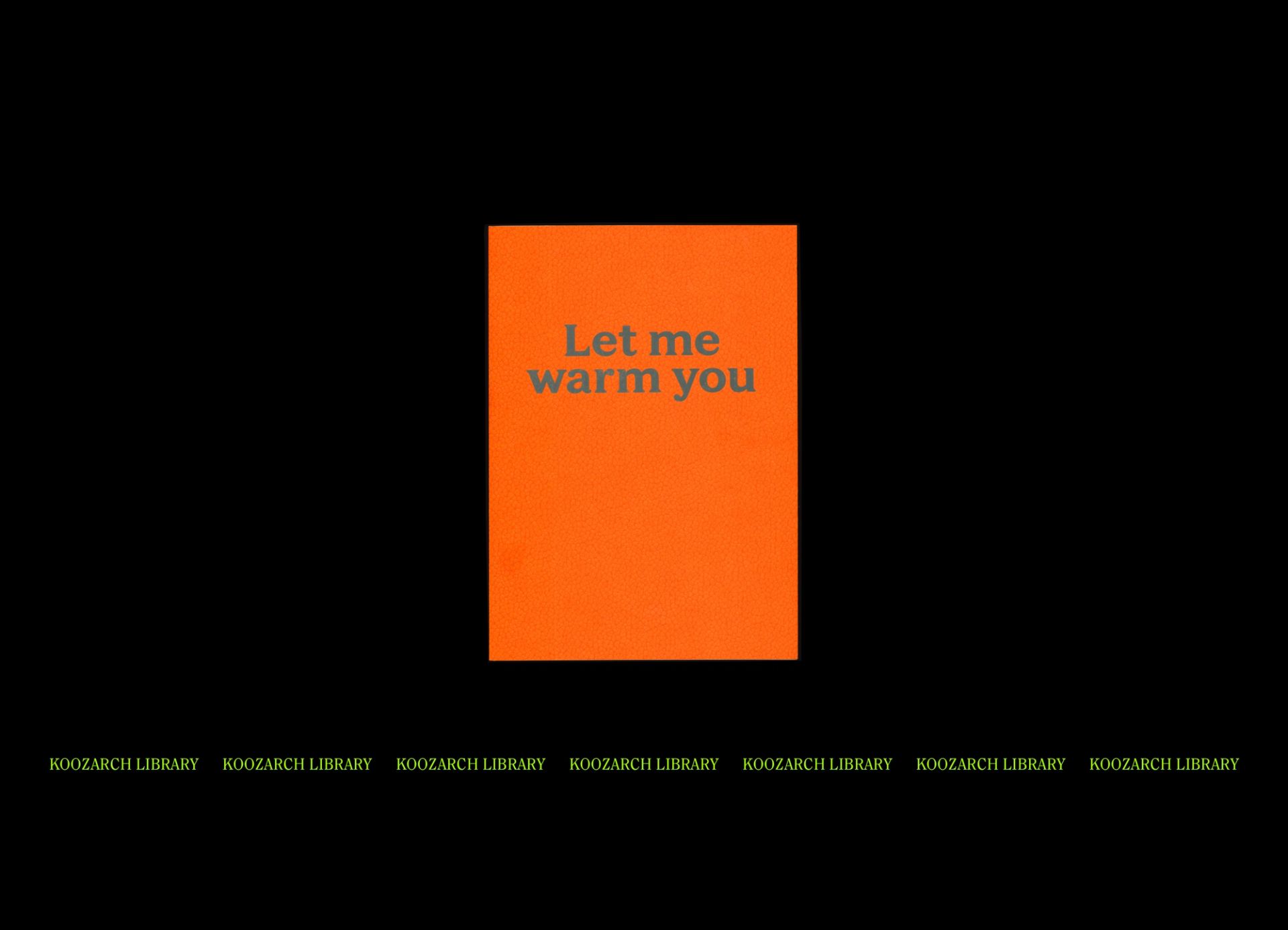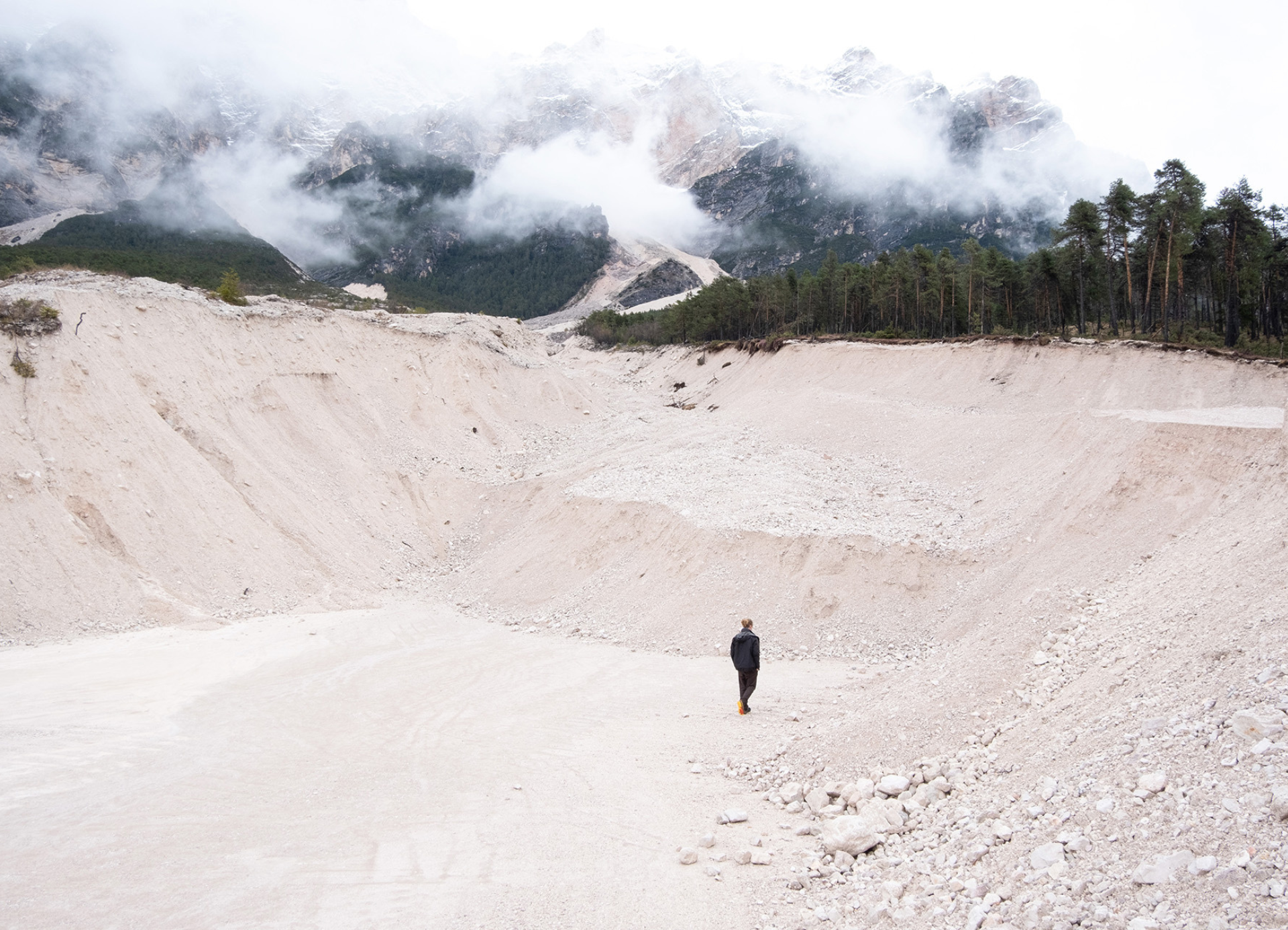Terra Infirma is a gathering of thoughts around the troubled relationship between architecture and its immediate context of “ground”. The material contingency is quite obvious; in order to build, we dig, remove, extract and cover. Yet in the vast majority of architectural drawings, the thickness of ground is non-existent, or at best, simplified. In section, it might be a poche or hatched area surrounding the foundations; in plan, land is a patchwork of parcels representing ownership and commodification of its resources. We deal with objects, ignoring what we assume to be simple ‘dirt’ underneath, with its unseen repositories of lead, carbon and ecosystemic complexity that extends far beyond the building envelope. ‘Ground’ has been compounded with the word ‘zero’ to imply a tabula rasa — but legacies of land grabs, denial of property rights and dispossession go hand in hand with the the legacies of colonialism, apartheid and oppression on racial and ethnographic bases. Then too, vast swathes of ground are ‘sealed’ under concrete, limiting any interactions with what is above and any chemical or life process from naturally happening below; out of sight, out of mind. As declared by the Italian environment minister (in Italy, every new birth is outpaced by the creation of 135 sqm of newly sealed ground-surface), soil is a non-renewable resource.
Terra Infirma is a gathering of thoughts around the troubled relationship between architecture and its immediate context of “ground”.
Prior to the planning of Terra Infirma, we have published articles on the closely-examined consequences of mining in Minett, the systematic sowing of nuclear toxicity in the Algerian desert, and computational compost, to name but a few. To use just one of an unusually diverse range of soil-related puns and idiomatic expressions, we’re not breaking new ground by suggesting the ground as a topic. But why is there so much love for the lithosphere; why, in terms of spatial practice, is it such fertile terrain (there’s another one)?
What choice does the ground have but to bear witness, as site and repository for all that shakes and rends its surface.
The interrogation of soil politics must accommodate heritage and histories, economy and ecologies, around nationalism and contested identities. The deliberately vivid and arresting metaphor of blood and soil — raised by patriotic peoples from Köln to Kashmir — is evidently far from a thing of the past; likewise the ancient imagery of ‘salting the earth’ in conquest. Palestine — as many other countries, especially those with a history of colonial oppression — was historically carved up and continues to pay the price of lines drawn on maps, later redrawn in the sand. And what choice does the ground, scarred by those lines, have but to bear witness, as site and repository for all that shakes and rends its surface.
Meanwhile Gaza, as many have pointed out, is now a wasteland of exposed and toxified soil; contaminated with munitions and pollutants, which have leached into the groundwater, the destruction of agricultural land and infrastructure in Gaza is a deliberate act of ecocide. The fundamental relationship of land to survival is plain here; this ground will not support life; far from nourishing, it will poison those who are obliged to live on it for an unforeseeable period. Shell craters in the forest of Ukraine even demonstrate the deadly long-term legacy of munitions that didn’t kill or injure people — through ecological and agricultural activities, these toxins will sustain the damage of war immeasurably, through the ground on which they land. And deforestation due to industry, fuel needs and timber trades has left vast tracts of denuded ground, partly responsible for the recent and totally unprecedented flooding of towns and villages in southern Brazil. At the same time, industrial and agricultural production continues to contaminate aquifers, whose unseen toxicity passes any political border, indiscriminately condemning all forms of life.

Photograph by Bruno Barrillot, the cofounder of the Observatoire des armements. The image was taken during a visit to France’s nuclear sites in Reggane and In Ekker in the Algerian Sahara, with the filmmaker Larbi Benchiha and his team in November 2007. Courtesy of the Observatoire des armements (www.obsarm.org). Thanks to Samia Henni for clearing the reproduction copyright.
Perhaps — in the face of political, social and humanitarian instability as we are able to witnessing — it feels comforting to focus on the ground beneath our feet. Here too, language gives us an abundance of romantic metaphor and simile; terra firma, Mother Earth, common ground, memories of mud-pies. Maybe zooming into the science of soil, at a macro and microscopic level — to focus on the metabolism of nutrients and wondrous connectivity of mycelium — comforts us with a sense of ‘natural’ order’, a finely tuned system of symbiosis. This feels restorative and purposeful, just as the wider picture becomes unbearable to view.
The concern of soil health is an old one, and as such offers an opportunity to present the notion of ‘metabolic rift’ — the separation of human labour from the tending of the land — shared in certain readings of Marx, with origins in agricultural studies of the nineteenth century. England, then epicentre of colonial trade, was in a soil crisis, importing some 286 000 tonnes of guano and — ghoulishly — had begun to scrape dirt from sites of historic battlefields, as both bone meal and bird shit are effective soil fertilisers. The collection of said guano, meanwhile caused the violent subjugation of indigenous peoples in South America, the indentured labour of Chinese workers and the environmental devastation of bird habitats, eventually leading guano itself to fall into short supply.
Contributions aim to be devices for imagining possible futures and strategies for new world-making actions that change the status quo and don’t surrender to a system whose sole scope is profit.
Prior to industrialisation and before the labour force — uncoupled from the land — surged into the city, the excrement of village and townsfolk was usually reinvested, so to speak, into the farmlands well outside the settlement. This returned in the form of crops, harvested from honest and well-tended muck. This shifting of the euphemistically-named ‘night soil’ provided a sustainable and metabolic give-and-take with the ground. With the separation of labour from land — with labour now exchanged as a commodity in the city — came a severance of agency. The modern city quickly became too big, too populated for the night-soil system to operate; the distance from centre to edge so great as to render transportation impossible. We invented new technologies to dispose of urban waste, leaving the surrounding lands too impoverished to be productive. So runs the connection between a soil and the city; furthermore, between distant peoples and places.
This issue aims to share a spectrum of spatial practice addressing the planet’s crust, gathering contributions which speak to the social, cultural, political, technological, economic and ecological contingencies of the ground. These contributions move towards imagining possible futures, sharing ground-shifting actions without surrendering to a system whose sole scope is profit. Restoration, even in architectural parlance, starts from the ground up — so here’s mud in your eye.

David Maisel, Desolation Desert, Blast 1, Minera Centinela, Copper Mine, Antofagasta Region, Atacama Desert, Chile 2018. Archival pigment print 48 x 48 inches and 29 x 29 inches. Courtesy David Maisel and Houk Gallery, NY/Haines Gallery, San Francisco/Robischon Gallery, Denver/ Ivorypress Gallery, Madrid.
This issue gathers contributions that focus on ground — or on earth, dirt, soil, the lithosphere, pedology, the underground, mud — as an archive of anthropological activity. We welcome architectural or spatial visions and explorations at all scales, from the minuscule to the monumental, which speak to the social, cultural, political, technological, economic and tectonic capacities of the ground.
We start by slicing across professional strata with a conversation between biologist, landscape architect and human geographer Seth Denizen, and dancer, architect and researcher, Victoria McKenzie. Both have been thinking deeply about soil and space; both claim to be dreamers, as dreaming is the imperative permission given to architecture.
Pioneering a mode of contemporary design with respect towards the ground, architect Mio Tsuneyama discusses the renovation of her own house in Tokyo, built without the necessity of excavation. In conversation with Federica Zambeletti, she discusses the civics of soil, its relationship with the city and citizenship.
Land struggles have been at the core of African anti-colonialism, and anti-colonialism across many parts of the world. Through her book Architectures of Migration, Anooradha Iyer Siddiqi, in conversation with Dubravka Sekulic, discusses the fundamentals of settlement, separation, spatial intelligence and political subjectivity.
Toxicity, cultural erosion and human destruction go hand in hand — yet humanity manages to find strength in caring for the land. Perhaps nowhere is this more starkly evident than in Palestine’s historic soils and in its people. Architect Malkit Shoshan discusses border ecologies on the Gaza Strip with Amir Qudaih, reporting from Palestinian ground.
Architectural designer and researcher Stephanie Lee (Office of Human Resources) and researcher, artist, and writer Philipp Sattler discuss the role of agriculture as a socio-political, economic and pedagogical device within the capitalist system. Lee's research Hard Labor, Soft Space, and Sattler's Trembling Worlds investigate radical farming, food production, ownership, identity, and memory, freeing rurality from exploitative, racist, and patriarchal regimes.
Architectural historians and theorists Beatriz Colomina and Mark Wigley, architect Uriel Fogué (elii - oficina de arquitectura), and artist, designer, and researcher Orkan Telhan reflect on ecological contracts, digestion, bacteria, and sewage infrastructures, tackling our biological and political relationship with microorganisms, architecture and tectonics. Through a transscalar approach to natural and artificial systems and processes, the conversation engages with the human body and the planet.
The film-making practice of artist and researcher Marwa Arsanios focusses on gender relations, spatial practices, and land struggles; recent works include seeking communal solutions for bettering soil quality in northern Lebanon. Arsanios is in conversation with architect and educator Shehrazade Mahassini, whose research questions the historicity of spatial production in former colonies.
Looking back at her childhood in communist Romania, Oana Bogdan reflects on the origins of her foundational position on land distribution, property and commodification. Linked directly to architectural fields of operation, such as the production and provision of housing, Bogdan’s full-throated call for the acknowledgement of the politicisation of land and its stewardship.
The astounding rock-hewn Coptic churches, at Lalibela, Ethiopia — dating from the twelfth century, — were among the first sites to be protected by the World Monuments Fund. Its ongoing work contrasts with the poetic preservation proposed by architect Miriam Hillawi Abraham in The Abyssinian Cyber Vernaculus, which challenges modes of mythmaking and notions of heritage.
Anthropologist Jennifer Deger and spatial and visual designer Feifei Zhou, co-editors of Feral Atlas: the More-than-human Anthropocene and coauthors of Field Guide to the Patchy Anthropocene with Anna Tsing and Alder Keleman Saxena, reflect on how the Anthropocene is detonating landscapes. Their interdisciplinary research and narrative investigate how ferality, patches, and infrastructures affect the Earth and its systems and the role of sciences in studying these phenomena.





